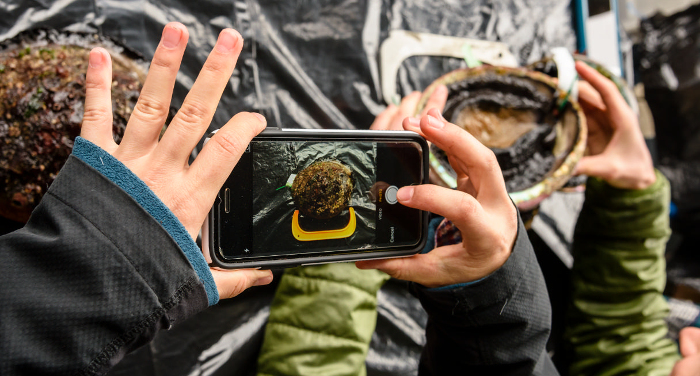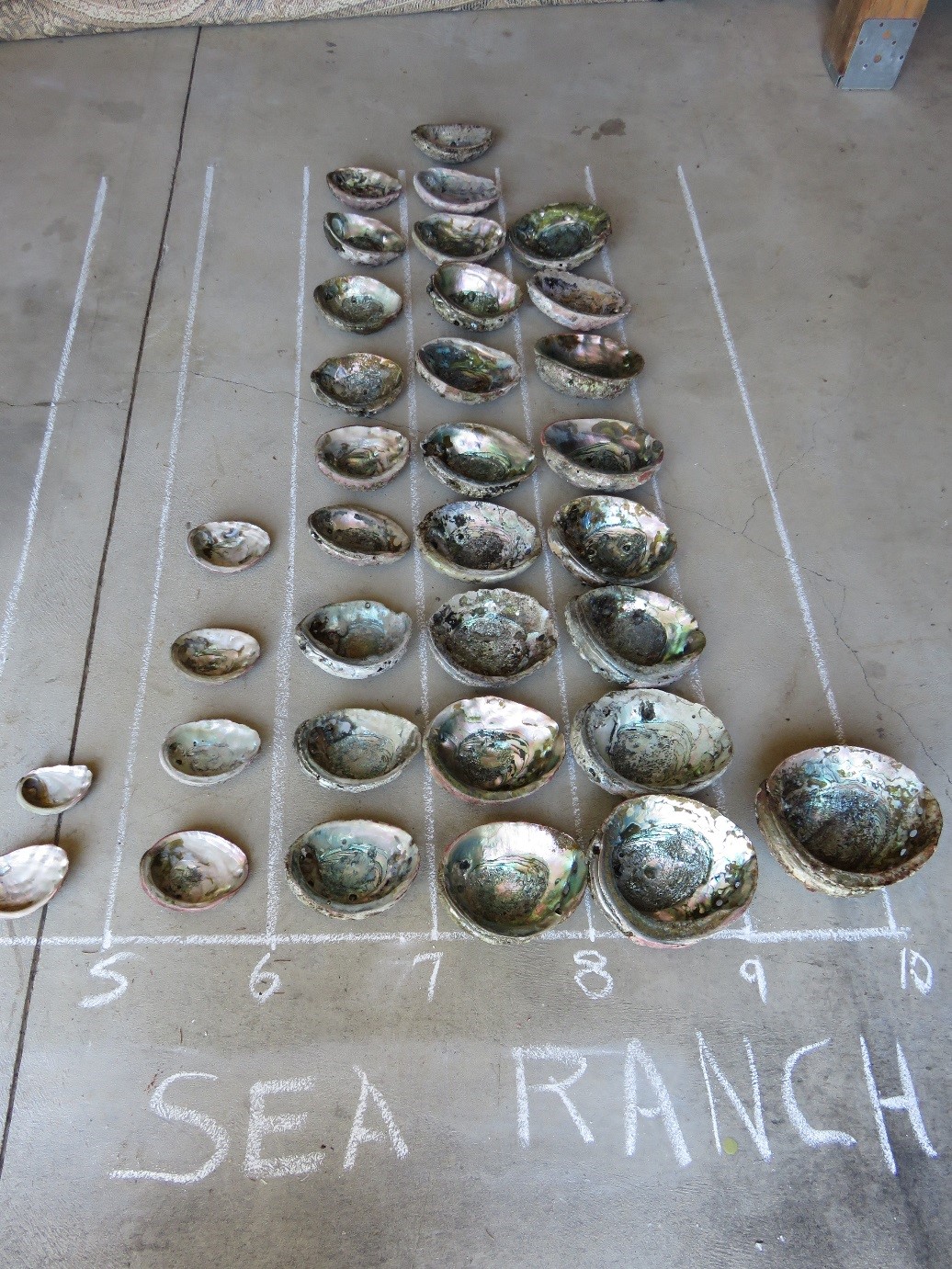Can putting technology in the hands of citizen scientists transform how abalone are managed?

Encouraging recreational fishermen to use a new phone app to record size of abalone in their catch will allow managers to better track the health of abalone populations. ©David Hills Photography
Abalone are marine snails that live on rocks on the ocean floor. Prized for their meat and mother-of-pearl shells, abalone have been the centerpiece of commercial, recreational and subsistence fisheries for hundreds of years.
By the 1990s, California abalone had become relatively scarce in southern California. Overfishing, disease and other coastal changes reduced their numbers so severely that in 1996, regulators put a moratorium on all commercial and recreational abalone diving south of San Francisco. Only one of California’s seven species—red abalone—can still be collected, but only in limited quantities, and only by recreational divers and only north of San Francisco Bay. Most of California’s red abalone are concentrated off the Mendocino and Sonoma coasts, near cold water upwelling.
Sustainable management of abalone is challenging for the same reason that plagues many other fisheries: lack of data
State regulators have done their best to gather information relevant to managing the recreational red abalone fishery. But limited funding has meant that divers only survey in select locations every three to five years. This means that regulators are blind to what’s happening in the off years and in areas where they don’t have survey coverage. If underwater conditions change, regulators don’t have enough information to make informed changes to annual catch limits.
One key piece of data that could aid fishery management is knowing the size of individual abalone. Healthy populations will have plenty of individuals of different sizes. If larger animals are missing from population surveys and the sizes skew smaller, that indicates heavy fishing pressure and a potential future drop in the stock.
To equip managers with the information they need to meet objectives for multiple user groups, scientists in The Nature Conservancy teamed up with leaders in the fishery and a California-based non-profit, Reef Check. Reef Check empowers recreational divers to gather high-quality data on reefs and oceans by training divers to do biological surveys. We worked with Reef Check California to develop an abalone-specific protocol and outfitted their divers with specially-made calipers that can measure and record the size of abalone without harming them.
So far, we’ve measured thousands of individual animals – and the interest from the volunteer diving community is growing rapidly. Divers now have the opportunity to aid in the management of their resource and ensure that this fishery endures for generations to come.
But the Reef Check pilot project is just a beginning. Tens of thousands of recreational divers go out every year to hunt for abalone along the North Coast. How can we tap the power of technology to turn those divers into citizen scientists?
Working with researchers out of the University of California, Santa Barbara, we’ve created an app that lets divers use their smart phones to record the location and size of their catch by taking and uploading photographs of their abalone when they return to clean their catch, creating a new data stream that can inform management decisions.
Engaging divers in data collection and other aspects of management also means more people will have a stake in their fishery and support policies that improve long-term outcomes for nature and people. It’s going to take more than a handful of state regulators to make sure abalone persist into the future. This is a challenge that requires collective effort.

Photo: ©Jack Likins
William J. Harford, Natalie A. Dowling, Jeremy D. Prince, Frank Hurd, Lyall Bellquist, Jack Likins, Jono R. Wilson
Among abalone species that were once harvested along the California coastline, red abalone (Haliotis rufescens) supports the remaining recreational fishery. To support development of a red abalone…Jono R. Wilson, Serena Lomonico, Darcy Bradley, Leila Sievanen, Tom Dempsey, Michael Bell, Skyli McAfee, Christopher Costello, Cody Szuwalski, Huff McGonigal, Sean Fitzgerald, Mary Gleason
Climate change is amplifying threats to ocean ecosystems and marine fisheries worldwide. In order to respond appropriately in the face of these ocean changes, commercial and recreational…The Nature Conservancy, Jono Wilson
California fisheries, like the red abalone fishery, are facing increasing environmental variation and uncertainty due to climate change, complicating the sustainable management of commercial and…The Nature Conservancy, Jono Wilson
There are thousands of fisheries around the globe that lack the infrastructure, capacity, resources and management techniques to perform conventional assessments and management. We know that fisheries…